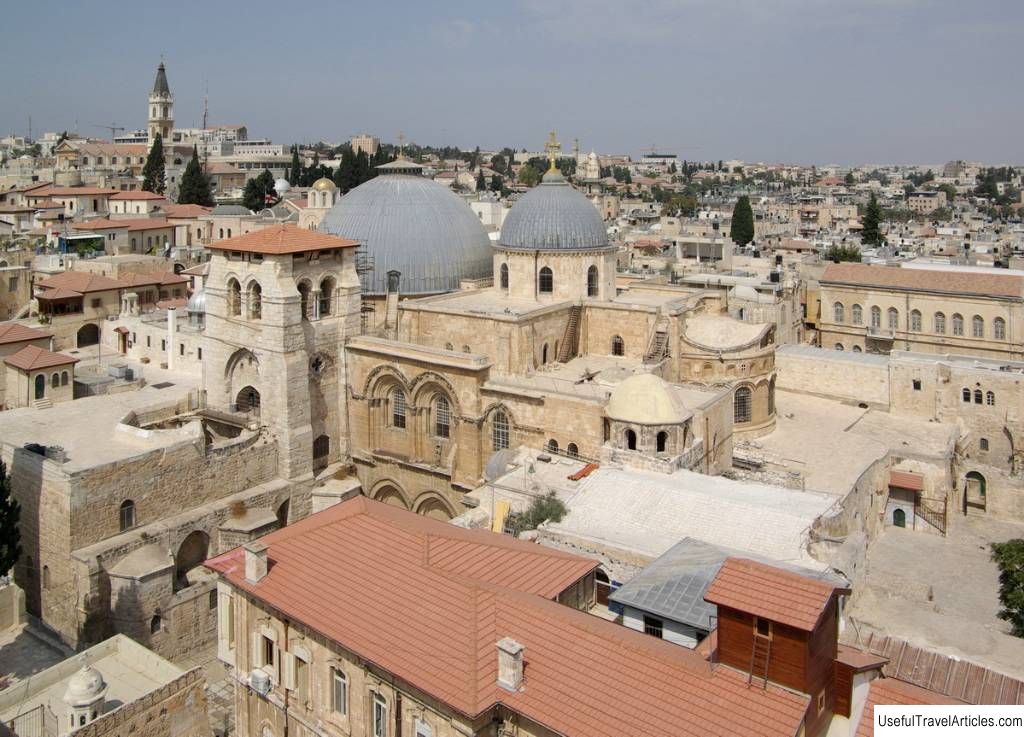Church of the Holy Sepulcher description and photos - Israel: Jerusalem
Rating: 9,3/10 (6954 votes) 
Church of the Holy Sepulcher description and photos - Israel: Jerusalem. Detailed information about the attraction. Description, photographs and a map showing the nearest significant objects. The name in English is Church of the Holy Sepulcher. Photo and descriptionThe Church of the Holy Sepulcher is one of the greatest shrines of the Christian world. Tradition says: it was on this place that the Savior was crucified and buried, here His Resurrection took place. The place of Jesus' execution and burial was revered by the first generations of Christians. In 135, the Romans built a pagan temple here. The first Christian emperor Constantine I replaced it with a huge church in 325. During the construction, Konstantin's mother Elena carried out excavations, during which the Holy Sepulcher, three crosses and several nails from the place of execution were discovered. The complex erected by Constantine was magnificent. Under the dome of the temple-mausoleum of Anastasis (in Greek - "Resurrection") the Holy Sepulcher was buried. Nearby stood a basilica under a hexagonal dome, its crypt marking the place where the Cross was found. The interiors were richly decorated with mosaics, precious casting, marble. Only part of the complex has survived to this day. In 614, under the Persian Shah Khosrov II, the buildings were badly damaged. Khosrov's wife, Christian Mary, convinced her husband to restore the shrine. However, in 1009, the Caliph Al-Hakim bi-Amrullah ordered the complete destruction of the basilica. The Byzantine emperor Constantine VIII bargained for the right to restore it, but the former splendor of the temple was lost. The rumor about the destruction of the Holy Sepulcher became one of the reasons for the Crusades. The crusaders rebuilt the temple in the Romanesque style, adding a bell tower (after the earthquake in 1545, only a part of it survived). In 1808, the wooden dome over Anastasis burned down. In the second half of the XX century, the building was restored. Today the complex includes an ancient rotunda, in which there is the Kuvuklia (chapel with the Holy Sepulcher), Golgotha with the place of the Crucifixion, the cathedral church of the Katholikon, the underground temple of the Finding of the Life-giving Cross, many chapels, several monasteries. The temple is divided between six churches: Greek Orthodox, Catholic, Armenian, Coptic, Syrian and Ethiopian. Each has its own chapel, its own hours for services and prayers. For centuries, closely adjacent confessions have been in conflict with each other. In the 18th century, Sultan Abdul Hamid established the division of property ("status quo"), which is still observed today: no denomination has the right to change anything in the temple without the consent of the others. A symbol of the status quo is a bricklayer's wooden staircase, which has stood motionless in the same place since 1757. Those entering the courtyard of the temple see her at the right arched window. Since the time of Saladin and Richard the Lionheart, the keys to the temple have been kept in a Muslim family - this avoids disputes around the church gates. Entering the vaults of the temple, the tourist first of all notices the Stone of Confirmation - legend says that a body was lying on it Jesus after being taken down from the Cross. On the right, the steps leading to Calvary go up. To the left is the entrance to the rotunda, where the Kuvuklia with the Holy Sepulcher stands. A beam of light falls from the central opening of the huge dome into the semi-darkness. There is always a queue of pilgrims who want to touch the shrine to Kuvuklia. This is where Orthodox Christians await the appearance of the Easter Holy Fire. Notes
            We also recommend reading The Cebu Provincial Capitol description and photos - Philippines: Cebu Topic: Church of the Holy Sepulcher description and photos - Israel: Jerusalem. |




